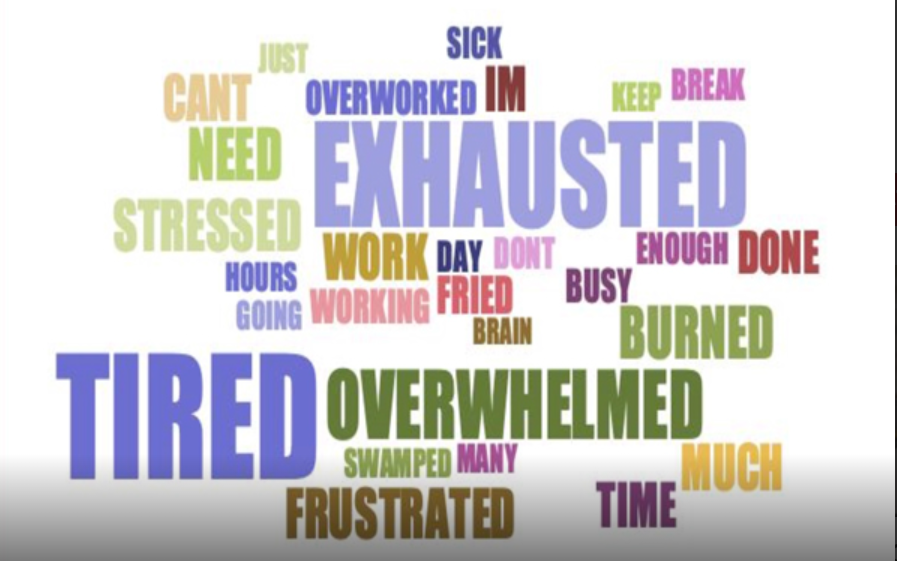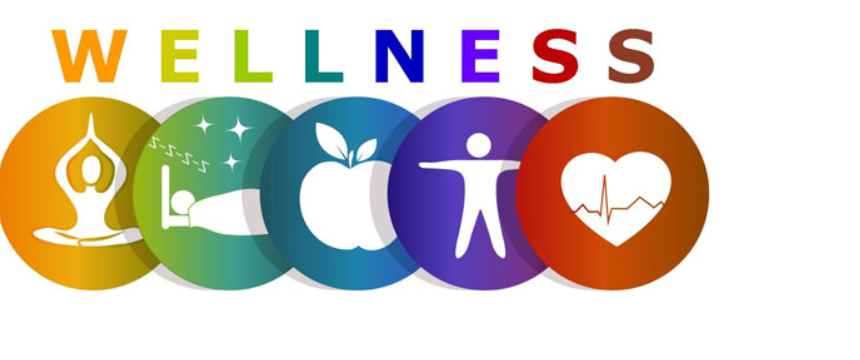To address ways destination organizations can prioritize mental health, we enlisted the help of Lindsay Hansen, a certified wellness coach consulting for Simpleview. Soon after the onset of the pandemic, she began working with Simpleview in a wellness coaching role, assisting staff through the recovery and transition process. In her one-on-one sessions with employees, she primarily focuses on four main pillars of wellness: sleep, nutrition, movement, and stress reduction.
Throughout her almost two years of working with the staff, she has found success in offering staff support, a listening ear, and stress management techniques like deep breathing exercises and “deskercises.” She also conducts group sessions focusing on the stress response, reducing tension headaches and fatigue, emotional intelligence, and increasing alertness and focus to help employees perform at their best.
What is missing from the mental health conversation as it relates to the struggles faced by our industry in the onset of the pandemic and its recovery process?
Almost three years later, destination organizations see themselves in the center of the recovery process as the tourism industry was one of the most hard-hit sectors from the pandemic. There were several hurdles that took a toll on our mental health, things like The Great Resignation, increased rates of depression and anxiety, and a general sense of unease as businesses were forced to cut back. Prior to the pandemic, over 200 million workdays were lost due to mental health conditions – one can only imagine what that number is today. Given all this, destination organizations have a prime opportunity to help reset the industry’s priorities on employees’ mental health, especially as travel continues to ramp back up.
I see DMOs as the head of the rest of the “tourism body” so prioritizing mental health within their own organization will lead to a trickle-down effect on the rest of the industry like their business partners, local stakeholders, hotels, restaurants, and the local community. That is, in the recovery process from the pandemic, destination organizations can set the tone for the industry in spotlighting mental health by simply beginning the conversation within their own circles. If asking how others are doing or feeling is as regular of a cadence as asking about the progress of your latest website build, this is a sign of a healthy, productive, and balanced company.
We also need to shed the antiquated notion that mental and physical health are separate; that they are impervious to one another. We know that our physical and mental health are bi-directional – both intimately tied and greatly affecting one another. This means as much as we ask someone how their 5K training is going (physical health) we also are willing to ask someone how they are doing after say, their beloved pet has passed or receiving a scary diagnosis (mental health).
How can organizations raise awareness for mental health struggles that employees are currently grappling with coming out of the pandemic?
Establish what I call ‘knowledge and norms.’ From a knowledge perspective, DMOs can individually and collectively educate themselves on mental health red flags – behavioral and cognitive signs someone is struggling mentally. This is not unlike how we are being encouraged to know hands-only CPR in the wake of NFL’s Damar Hamilton’s collapse on the football field. Both scenarios could save someone’s life. Examples of red flags that an employee is facing a mental health challenge are:
- Social isolation or withdrawal
- Tired-looking, disheveled, weight loss/gain, decline in hygiene
- Little or no interest in work or hobbies
- Downcast, anxious, or irritable
- Incomplete thoughts, indecisiveness, easily distracted
- Absenteeism (frequent sick days) or “presenteeism” (physically present at work, but not “there”).
Keeping a pulse on how your employees are doing is vital; “wellness check-ins" are an effective, informal way to do this. This is where the ‘norm’ part comes in; make it standard business practice to ask first in your 1:1s how they are doing, as well as reach out if you are concerned with a colleague. You can say something like “hey, Rob/Rose, I’ve noticed you haven’t really seemed like yourself lately, how are you doing?” In fact, the Restaurant Association created “Mental Health Conversation Cards” that give real examples of what beginning a dialogue with someone can look like. It is super practical. One more reason to make mental health conversations the norm in your organization is the increasingly remote work environments we find ourselves in today; people can be overlooked and easily hide and withdraw. We cannot afford to not ask; in fact, research shows most people struggling with their mental health want to be asked, including in the workspace.
What are some actionable steps organizations can take to provide more protection and security for their employees?
The feeling of instability that began due to the pandemic is still prevalent in the tourism industry, so it is important to address it head on. A guiding principle any organization can benefit from is transparent communication. Transparency vertically and horizontally can help put employees’ minds at ease rather than allowing false narratives to build in their heads, causing even more anxiousness about uncertainties. Weekly newsletters, formal and informal communication from the top down, bi-weekly meetings, wellness check-ins in-person (when possible) and video chat are actionable steps to strengthen the connection between themselves and their employees. This is something I watched Simpleview do extremely well during the pandemic when everyone was forced to work from home.
While not a simple decision to make (and of course, I am partial here!), I also recommend organizations consider contracting with a certified wellness coach, who is dedicated to the health of their employees, providing additional layers of support and guidance with whatever they are facing. Health coaches can also help boost utilization rates of an organization’s Employee Assistance Program (EAP) EAP. By working with a wellness coach, employees have a safe space to talk, keep track of the four main pillars of health that I mentioned earlier, or get direction and encouragement in receiving additional services. This is the main function I play at Simpleview – one and a half years in, my time there has been fully booked with these types of sessions.
Another programmatic recommendation I would make is for a company to dedicate a whole month to employees’ mental wellbeing is on October 10th every year and Mental Health Awareness Month is celebrated every May in the United States. These two campaigns present an easy, natural opportunity for organizations to establish ‘knowledge and norms’ in their workplace around mental health.

What is your advice for destination organizations trying to balance their organization's needs with their staff's? How can organizations do a better job of balancing these two?
This is the million-dollar question that any company, regardless of industry, is asking – how do I take care of my staff while also running a business? But I do not think those two things are at odds at all. From a macro view, running a business effectively means taking care of your employees first and foremost. Transcendent, positive change happens when organizations are invested in their employees’ health (read: not just their physical health) by providing them with tangible resources to improve their well-being comprehensively.
Studies consistently show that when employees feel taken care of and receive the right support to do their job well, they are more likely to exceed performance expectations. Whether the destination organization is small with just a few staff members or part of a much larger entity, putting the people who do the work first will lead to a more productive, happier team. As mentioned previously, the tourism industry is not immune to mental health challenges, which is why it is important to acknowledge the obstacles that exist and to provide resources to employees to address them. A policy recommendation I would love to see more often is employees getting to dedicate a small number of hours each week focused primarily on their health and wellness within the workday. It could be a “use-or-lose" policy but I think most employees would take advantage and be healthier, happier, and more generative with their work as a result. It is a win-win for the organization and the employee.
The National Council for Mental Wellbeing provides Mental Health First Aid Courses, which train individuals to know how to respond to a mental health crisis and learn ways to support others in their mental wellbeing, along with providing a supportive workplace environment. I encourage everyone to take this class! Their slogan is “Let’s make Mental Health First Aid as common as CPR.” Another great non-profit that is helping further the message is the Center for Workplace Mental Health and their ICU course for employers. The ICU acronym (think: “I see you”) offers a three-step process for someone to go through in real-time to help someone who is experiencing a mental health challenge or even crisis: ICU, I- identify the signs (again, think red flags!), C- Connect with the person, and U- Understand a way forward together.
What are the best strategies organizations can pursue to avoid burnout amongst staff? What specific remedies would you recommend?
We all know that fostering a work environment that encourages work-life balance is a good thing, but it is more elusive in terms of walking that out. Employees must take ownership in protecting and growing in their personal life outside of their job, which looks like pursuing other passions and connecting with their people. In terms of sick days, employees should feel comfortable to take a sick day not just when they have the flu but also when something has happened that acutely affects their mental health. Allowing days off for mental health reasons allows employees to recharge, connect with their support network, and even possibly reach out to a counselor. In an organization, it can be established that employees taking time off for mental health is a good practice. Employees, in turn, are more likely to use their time off responsibility and come back to their work refreshed.
Another helpful strategy is for organizations to provide spaces for group gatherings, allowing colleagues to talk through burnout in a healthy, organic way, which allows people to feel seen and heard and receive the support they need from other colleagues. This is not unlike support groups you hear about that are decentralized in their format but hold real meaning to those who attend. In my work at Simpleview, I hold these types of groups, but I also provide more formal training about burnout, mental health, and practical steps we can take to restore balance to our professional and personal lives.
In reference to employee wellness, benefits like gym classes, yoga, healthy snacks offered at the office and the like are great, but there is still room to grow. These benefits assist in the maintenance piece of helping staff, but I recommend additional steps like implementing weekly wellness check-ins, contracting with a health coach, and regular promotion of your EAP and any other mental health services that are offered. Further, I would propose checking in with any staff that are on extended leave, regardless of the reason. Checking in on staff and their mental wellbeing during periods of extended leave can help with the transition back to the workplace, ensuring they feel an extra layer of security and support, and increasing the chances they will utilize additional support services.

One of our foundation challenges we are tackling this year is mental health in our industry. What are some ways organizations can perform a wellness check-in with their staff?
It is important to recognize that we are humans with a very real need to connect (regardless of being an introvert or extrovert!); we are wired this way and so we are not meant to be doing this life solo. Therefore, wellness check-ins are vital to help connect managers with their employees, and I think “peer learning circles” are a way for managers and leaders to receive support from one another, too. Managers that take care of people need people to look out for them, too.
Simpleview utilizes a platform called 15five; a tool designed to connect employees on various levels within the organization, especially the manager-employee relationship. In the tool, the first question an employee is asked is "How did you feel at work since your last check-in?” using a scale of 1 to 5, keeping a record of the answer's week to week. With this tool, managers can be alerted to any “dips” their employees are having and quickly respond (for example, if an employee usually reports 4’s in their check-ins but for the past few weeks reports 1’s or 2’s). This makes it a normative, consistent practice, that helps usher managers and employees to have more real conversations about how they are doing and feeling at work. This also allows for affirmation and further strength-building conversation when the employee is doing well (e.g., reporting 4’s and 5’s consistently). When employees feel valued and looked out for, trust and commitment is gained, and so they are more likely to produce above-par work.
From an organization standpoint, what does it take to have happy, productive, and connected staff that can be of service to others? Can you expand your thoughts on creating a valuable work environment?
Creation of a valuable work environment starts with setting the tone within the organization from the executive level on down. In my view, it is vital to understand the expectations that are placed on employees, even at a granular level, and assess what they are taking on. Setting realistic expectations is vital in avoiding employee burnout. I surmise that for as many employees that under-perform and hit the easy button all too often, there are just as many that over-perform and work themselves ragged at the expense of their own health. Oftentimes it is harder to spot the latter than the former, especially now that so many employees are remote.
Speaking of remote work, management needs to actively watch out for the signs of isolation and burnout: anxiousness, withdrawal, etc. A hybrid format in which they come back into the office a few days a week while having the flexibility to work from home some days could serve as the right balance to a valuable work environment. The preventative piece ensures employees set healthy boundaries; taking adequate breaks and logging off when the workday is done.
From my standpoint, happy and productive employees are optimistic, consistent, and get their work done. Are they perfect? No. Do they make mistakes or have ebbs and flows over their working lives? Yes, of course. But make no mistake: employees that are a positive asset to the company year after year are those that have mental health support in both their professional and personal lives.


